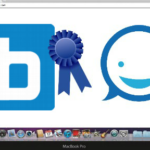
post
February 24, 2015
4 Benefits of Consolidating Channels Into One Platform
Providing a sophisticated communication experience can be a difficult task. Today’s technology has advanced so much in such a short period of time that businesses have to account for channel proliferation (voice, SMS, social, etc.), multiple touch points (web, contact centers, branches, etc.), the different tasks being performed (reminders, customer support, confirmations, orders, etc.) and channel affinity (which channels customers prefer) when providing service.
In order to accommodate customer needs across channels, businesses have tried various methods, such as using different phone numbers or assigning separate departments to manage each channel. However, 87% of customers think brands need to do a better job of creating a seamless experience, and over half of customers are frustrated by having to repeat their problems to various customer service representatives. Being shifted from channel to channel without context has created a fractured customer experience.
The factors listed above have made it difficult for executives to strategically manage their communication strategy. Businesses can overcome these obstacles by consolidating their use cases and channels into a single platform (and phone number). In doing so, businesses will be able to:
- Maintain brand consistency. Businesses should represent themselves as similarly as possible across channels, with respect to each channel’s style and constraints. By consolidating communication channels, businesses will be able to make sure the responses and services offered are the same across channels to maintain brand consistency. If customers switch between service channels, they should be able to tell that they’re dealing with the same company.In addition, businesses that manage all their channels within one platform will be able to deliver a more uniform response in terms of tone, appearance and messaging.
- Increase ease-of use for customers. As mentioned above, many customers today are frustrated by having to talk to multiple agents or start their conversation over, which contributes to a poor customer experience. The user interface of traditional service channels like the IVR can also have a negative impact, as customers try to use a tool that is often difficult to navigate, sensitive to incorrect input, and takes too long to connect with an agent. Businesses can address these frustrations with channel pivot, which lets customers switch from one channel to another based on what best suits them and their environment, all without losing context. With regards to switching between voice and texting, a Harris Poll study found that 44% of customers would prefer to press a button and start a text conversation immediately rather than wait on hold.
- Foster strategic growth. By consolidating channels, company leadership can view communications in a holistic way and better understand how different channels can be used to support one another. American Express has done an excellent job of this, transferring customers from voice to text to web as they interact with the fraud detection system on their mobile phone. In addition, consolidation onto one platform allows company leadership to determine what channels have seen the most engagement for specific use cases and drive customers to those channels. For example, if customers are using text messaging to reset their password more often than voice, businesses should provide an option within their IVR to switch to text when customers call in to reset passwords. This will increase the chance of customer success as well as satisfaction.
- Experiment with rapid iteration. Businesses that consolidate their communication onto one platform are in a position to run low-risk/high reward experiments. A business using a platform like OneReach could offer channel pivot between text and voice and monitor how customers use the new channels. If the initial run is successful, businesses can scale their communication strategy to account for increased usage.
The days of siloing customer service channels are over. Businesses that consolidate their channels and use cases will be able to offer a solution where the whole is greater than the sum of its parts.
To learn more about what channels customers prefer and how they want to use them, download the 2014 Harris Report here.
Photo by stokpic.
Stay up to date
Latest Articles

OneReach.ai Named a Leader in the IDC MarketScape for Conversational AI Software 2023
December 18, 2023



